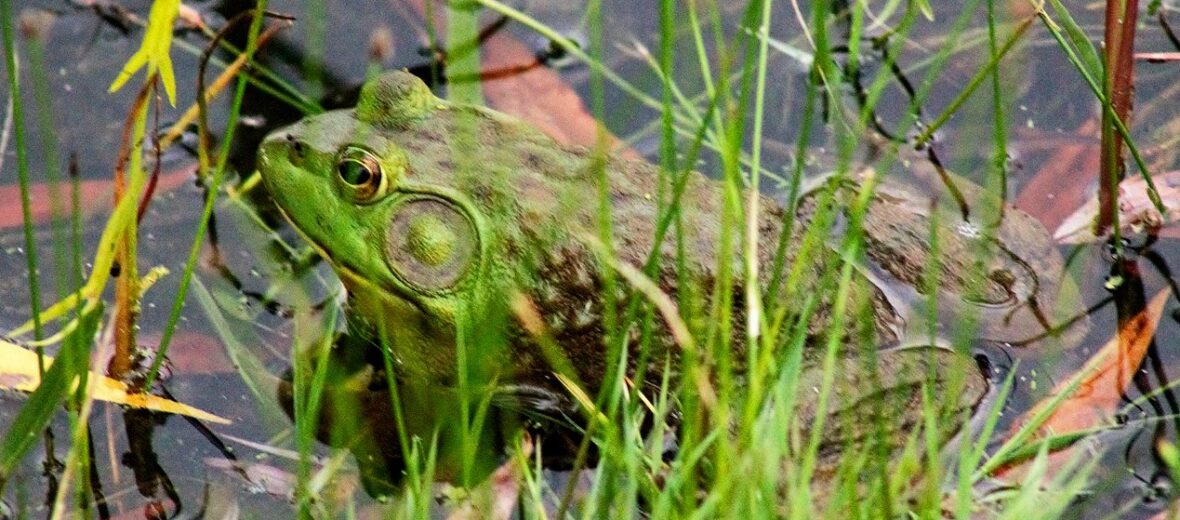
Well known for their size and being quite loud, when calling, the American bullfrog is native to the United States. They prefer ponds, marshes, lakes, slow flowing rivers, and streams. They get their namesake due to their loud call that resembles that of a bull bellowing. Due to their potential as a food source, these frogs have been distributed all over the world and have thus become globally invasive, wherever they are released. Due to their invasive nature and global distribution, these amphibians are listed as Least Concern by the IUCN. Their numbers are also increasing.
First the Stats…
Scientific name: Lithobates catesbeianus
Weight: Up to 1.5 lbs.
Length: Up to 8 inches
Lifespan: Up to 9 years
Now on to the Facts!
1.) Due to their ability to out-compete others for food, their predatory nature, and their immunity and thus subsequent spread of the deadly Chytrid fungus to other amphibians, these frogs manage to over populate everywhere they’re introduced.
2.) Like other amphibians, their skin is permeable, in that they drink water through their skin. They also partially respirate through their skin as well as via normal breathing methods.
3.) Bullfrog tadpoles are sometimes sold at pet stores.
4.) Albino bullfrogs are often kept as household pets.
5.) The males make 3 apparent calls: an advertising call – to attract females, a territorial call – meant to warn other males to stay away, and an encounter call that takes place right before a bullfrog battle.
But wait, there’s more on the American bullfrog!
6.) Crayfish, snails, water beetles, dragonfly nymphs, small fish, occasionally even small birds, mice, and even each other are all on the menu.
7.) Snapping turtles, herons, foxes, and raccoons all prey on bullfrogs.
Did you know…?
They have already completely wiped out around 100 other amphibian species, globally.
8.) Females lay up to 20,000 eggs in each egg mass!
9.) It has been surmised that bullfrog males engage in leks, territorial polygyny, and harems during the prolonged mating season.
10.) The call of a male bullfrog can be heard from half a mile away.
But wait, there’s still more on the American bullfrog!
11.) Like most other frogs, they are nocturnal (active at night).
12.) These frogs, like most other frogs, are ambush predators. They lay in wait for passing prey to happen by and then lunge at their prey with a long, folding, sticky tongue and a gaping mouth.
Did you know…?
Bullfrogs are capable of jumping up to 10 times their body length!
13.) Large prey items are swallowed by receding their eyes inward and using their eyes to push the prey down their throat.
14.) Tadpoles emerge from the eggs only 1 week after being laid. They metamorphose into frogs within as little as a couple weeks!
15.) As a predator deterrent, their mucous coating is said to be foul tasting and thus repels most predation.
Now a Short American Bullfrog Video!
Be sure to share & comment below! Also, check out the Critter Science YouTube channel. Videos added frequently!
Want to suggest a critter for me to write about? Let me know here.



